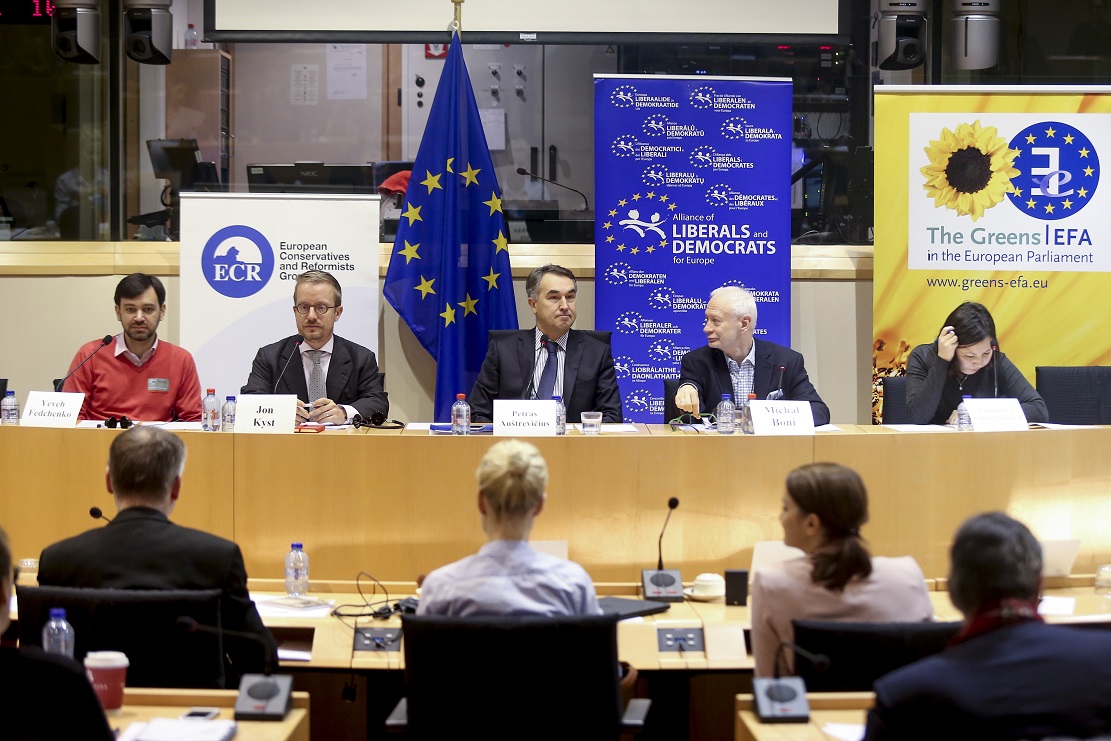For the Kremlin, propaganda has become an integral part of information warfare. Throughout the past decade the Russian propaganda machine has been structured and effectively implemented, reaching a climax during the occupation of Crimea and the subsequent devastating war in Eastern Ukraine.

It started in 2005 with the creation of Russia Today (subsequently RT) and every year more “media” outlets are added to this global network. Almost every week another propaganda outlet, Sputnik International, opens a new bureau somewhere in the world, hiring qualified local journalists and producing radio and multimedia content in almost 30 languages.
According to their website, “Sputnik points the way to a multipolar world that respects every country’s national interests, culture, history and traditions”. This is just one of the many examples of media outlet double-speak. In reality, their aim is to influence global public opinion, distort reality and act as a mouthpiece for the Kremlin. From the very beginning, Russia’s propaganda machine was designed to target a much wider audience than Ukraine or Russia’s other neighbours. The real aspiration is to achieve global media dominance. General Breedlove, NATO’s top commander in Europe, recently said that this “is not just about Ukraine. Russian activities are destabilising neighbouring states, and the region as a whole”. While he was referring primarily to the military aspect of the Russian-Ukrainian war, propaganda remains an integral part of this war, a global war of meanings, concepts, and values. Paul Goble suggested that our understanding of national security must not be limited to military force. In this sense the Russian propaganda apparatus is a threat to global security.
Not only does it distort reality to breed hatred and manipulate the political and historical context in Russia itself, setting it on an anti-Western course and inflaming warmongering attitudes towards Ukraine, but it is also used as a powerful weapon against core human values on a global scale. One of the central premises of the contemporary Russian agitprop is to deny that democracy in general, with free media or free elections, actually exists anywhere in the world.
The core of the Kremlin’s propaganda, both inside and outside Russia, is a post-modernist denial of everything. The contemporary Russian propaganda system is often compared to that of the Soviets during the Cold War. Of course, it does borrow techniques from the KGB playbook; many terms are easily recognisable, from the “puppeteers from Washington” to “foreign agents”, yet it is fundamentally different. Ideology was a central element in the propaganda of the Soviet Union, which clashed against values-based counter-propaganda coming from the West.
The central role played by the communist ideology ultimately made Soviet propaganda weak and ineffective; such ideological narratives only appealed to specific (left-leaning) political groups or countries. There is no new ideology contained in current Russian propaganda, because Russia does not have one ideology. Instead, it borrows a little from everything. In this way, the system can produce a large number of “small propagandas”, each of them targeting a specific audience. The more messages the better; this multiplies the confusion.
To paraphrase Peter Pomerantsev, one could argue that the aim is not to provide a sole narrative, but to create clashes of narratives in order to confuse different audiences with different messages. Of course, one can easily identify some grand narratives: that Ukraine is a fascist state created by a corrupt US government that is killing their own people in Ferguson; that Ukraine is a collapsing state; or even that it is the US/NATO who are fighting in Ukraine – and that, of course, there are no Russian forces on the ground. As one browses the StopFake.org website, produced by a team at Kiev’s Mohyla School of Journalism, it is easy to identify a disproportionate number of absurd and utterly nonsensical “news” stories. One of the most noticeable fakes is that of a 3-year-old boy in Slaviansk who was allegedly crucified by Ukrainian soldiers. Produced by the government-owned ORT television for prime-time “news”, this outrageous lie was based on a single witness who, as it appeared later, had never visited the place and was also the wife of a former Ukrainian police officer who had changed his loyalty and deserted to Russia after the occupation of Crimea. This “crucifixion” plot can be traced back to WWI when it was first used, and to the Games of Thrones where it was referenced most recently.
However, the most epitomic is the explanation as to why this story appeared on television at all. When confronted directly, the anchor Irada Zeynalova answered: “It’s not the journalists who should prove this event happened; it’s for all of you to prove that it did not happen”. StopFake.org has researched and debunked scores of other outlandish stories including “HIV dispersed by Ukrainian military jets over Donbas to punish the local population” (to encourage locals to flee the territory), “President Obama bans the use of balalaikas in the US until 2020” (to inflate anti-American sentiments among Russians) or “Two slaves and plot of land to Ukrainian soldiers fighting in Donbas” (to show the alleged barbarism of the Ukrainian army).
Looking at them separately, and using an elementary level of critical thinking and media literacy (while not being subjected to constant propaganda bombardment from all sides), most people would find them amusing and not very newsworthy. However, this approach has proved to be effective. It is aimed at producing absurd stories based on belief not fact, rumors not knowledge, and then extensively multiplying them via television and social media. This makes the fabricated information popular (even viral), arguably very influential, and hard to debunk. It is particularly difficult to disparage conspiracy theories. The consumers of conspiracy are already inclined to believe that there can be no coincidence: someone is definitely behind the curtain, masterminding the realm of politics and the media, war and peace, elections and trade. In this shady world, “Blame the Other” and “whataboutism” are substitutes for facts and rational decisions.
This is what makes audiences happy with Russian propaganda and receptive to it. In many corners of the world, people are relieved to know that someone else can be blamed for their own problems.
Exploiting irrational and delusional thinking – that is what truly sets contemporary Russian propaganda apart from its Soviet predecessor, and makes it so effective and dangerous. Recommendations What can be done to limit the impact of Russian agitprop outlets?
• Elevate global awareness of Russian propaganda and its consequences for different countries.
• Understanding the manipulative nature of their reporting, policymakers and journalists should stop considering these media as serious and legitimate.
• Outlets representing agitprop should be delegitimised and stripped of any journalistic rights and privileges, such as access to information, granting interviews, invitations to be part of debates and discussions, participation in professional media associations, reception of awards, etc.
• National governments should carefully scrutinise these outlet’s access to new markets, licensing and financing of their activities.
• A “Nemtsov List” should be implemented to include the so-called “journalists”, individuals who must bear personal responsibility for their reporting and face the imposition of travel bans, visa restrictions and personal sanctions affecting bank accounts and property abroad. “The problem of the Western media is that it chooses fairness over truth,” observed Edward Lucas. It should finally become clear that, far from representing a “second opinion”, the Kremlin’s propaganda outlets have rudely hijacked one of modern journalism’s sacred concepts in order to exploit it to their own benefit.
Yevhen Fedchenko is Director of the Mohyla School of Journalism in Kyiv, Ukraine, and Co-Founder of the verification website StopFake.org.





